© 2023 All Rights Reserved. Do not distribute or repurpose this work without written permission from the copyright holder(s).
Printed from https://www.damninteresting.com/journey-to-the-invisible-planet/
In the late 17th century, natural philosopher Isaac Newton was deeply uneasy with a new scientific theory that was gaining currency in Europe: universal gravitation. In correspondence with a scientific contemporary, Newton complained that it was “an absurdity” to suppose that “one body may act upon another at a distance through a vacuum.” The scientist who proposed this preposterous theory was Isaac Newton. He first articulated the idea in his widely acclaimed magnum opus Principia, wherein he explained, “I have not yet been able to discover the cause of these properties of gravity from phenomena and I feign no hypotheses […] It is enough that gravity does really exist and acts according to the laws I have explained.”
Newton proposed that celestial bodies were not the sole sources of gravity in the universe, rather all matter attracts all other matter with a force that corresponds to mass and diminishes rapidly with distance. He had been studying the motions of the six known planets—Mercury, Venus, Mars, Jupiter, Saturn, and Uranus—and by expanding upon the laws of planetary motion developed by Johannes Kepler about eight decades earlier, he arrived at an equation for gravitational force F that seemed to match decades of data:
Where m1 and m2 are the masses of the objects, r is the distance between their centers of mass, and G is the gravitational constant: ~0.0000000000667408. But G is only an approximation; humanity may never know the precise value because it is impossible to isolate any measuring apparatus from all of the gravity in the universe.
Fellow astronomers found that Newton’s theory seemed to be accurate—universal gravitation appeared to reliably forecast the sometimes irregular motion of the planets even more closely than Kepler’s laws. In 1705, Queen Anne knighted Isaac Newton to make him Sir Isaac Newton (though this honor was due to his work in politics, not for his considerable contributions to math or science).
In the century that followed, Newton’s universal gravitation performed flawlessly. Celestial bodies appeared to adhere to the elegant theory, and in scientific circles, it began to crystallize into a law of nature. But in the early 19th century, cracks began to appear. When astronomer Alexis Bouvard used Newton’s equations to carefully calculate future positions of Jupiter and Saturn, they proved spectacularly accurate. However, when he followed up in 1821 with astronomical tables for Uranus—the outermost known planet—subsequent observations revealed that the planet was crossing the sky substantially slower than projected. The fault was not in Bouvard’s math; Uranus appeared to be violating the law of universal gravitation.
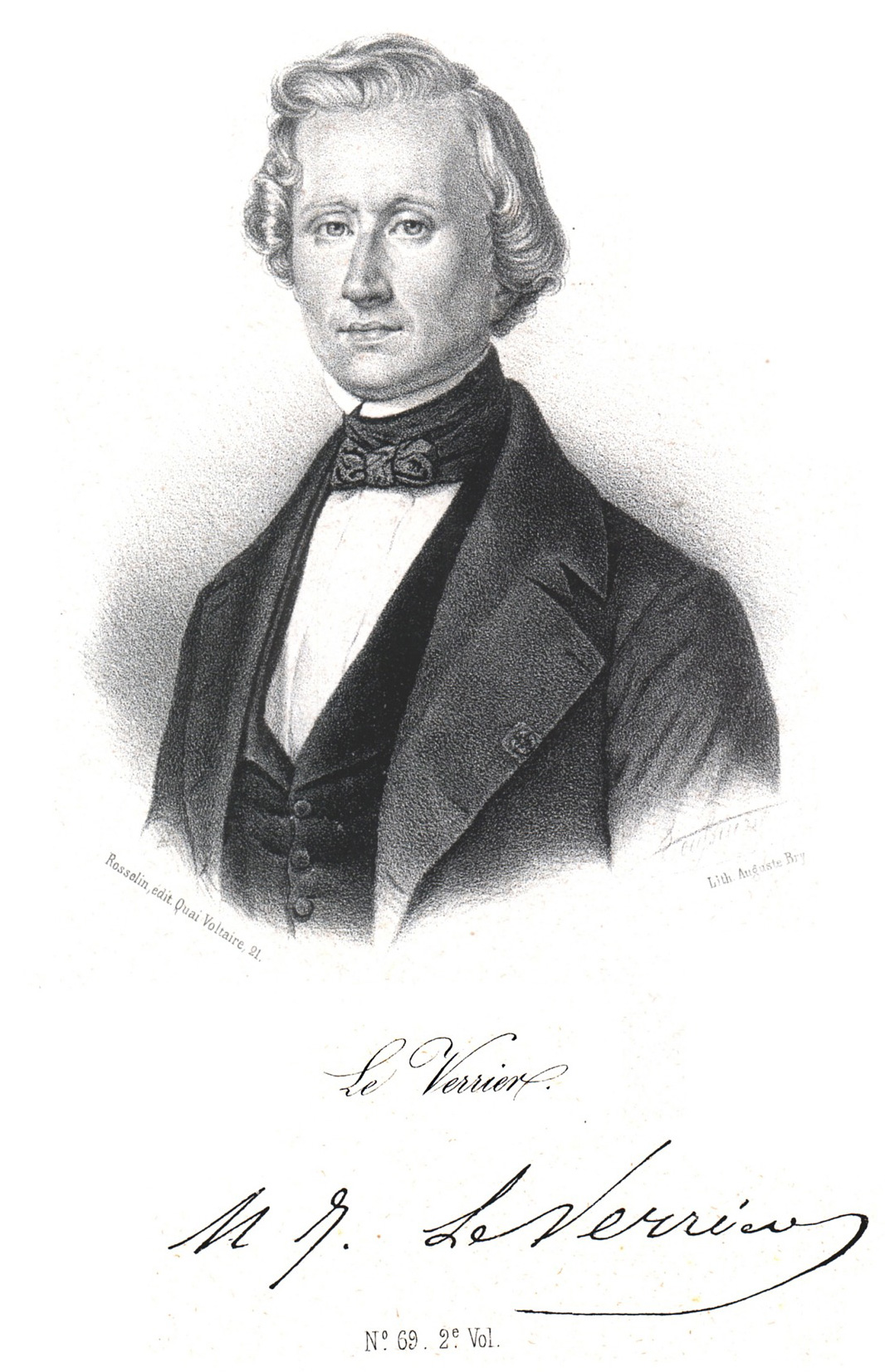
Newton’s theory was again called into question in 1843 by a 32-year-old assistant astronomer at the Paris Observatory, Urbain Le Verrier. Le Verrier had been following the Uranus perturbations with great interest, while also compiling a painstaking record of the orbit of Mercury—the innermost known planet. He found that Mercury also departed from projections made by universal gravitation.
Was universal gravitation a flawed theory? Or might undiscovered planets lurk in extra-Uranian and intra-Mercurial space, disturbing the orbits of the known planets? Astronomers around the world scoured the skies, seeking out whatever was perturbing the solar system. The answer, it turned out, was more bizarre than they could have supposed.
If there were indeed unseen planets, verifying them visually would prove challenging. An intra-Mercurial planet between Mercury and the sun would be smothered in severe glare. And an extra-Uranian planet outside of the known solar system would be such a small, dim, slow-moving spot in the vastness of space that it was a fool’s errand to simply look for it; one would need to estimate its position based on its influence upon Uranus, which would involve years of precise, painstaking calculations in longhand.
Twenty-five years of calculations, it turned out. Le Verrier continued to catalog the discrepancy in Mercury’s orbit; meanwhile, he also grappled with the mathematics to approximate the position of an unknown planet that might be causing drag on Uranus. By June 1846, he felt he had reached a plausible estimation, and he hoped to check his work with observation. He asked his superiors at the Paris Observatory for some time on the coveted 9 inch diameter telescope. The observatory staff, however, had little confidence in the longhand calculus of a mere assistant astronomer. His request was denied.
Le Verrier contacted observatories throughout France, but all of them rejected his request for telescope time. The elder astronomers felt there could not be success in making observations based on mere theoretical deductions. It had never been done before. Undeterred, Le Verrier dispatched a detailed letter to a colleague outside of France—Johann Galle, the director of the Berlin Observatory.
Galle acted on the letter the very evening he received it and directed his own 9 inch telescope at Le Verrier’s estimated celestial coordinates. After a brief search, he found a small, blue disk of light. The following night, he observed the coordinates again and found that the speck had moved slightly relative to background stars. He wrote back, “The planet whose position you indicated really exists. The same day I received your letter I found a star of the eighth magnitude that was not recorded […] The observation of the following day confirmed that it was the planet sought.”
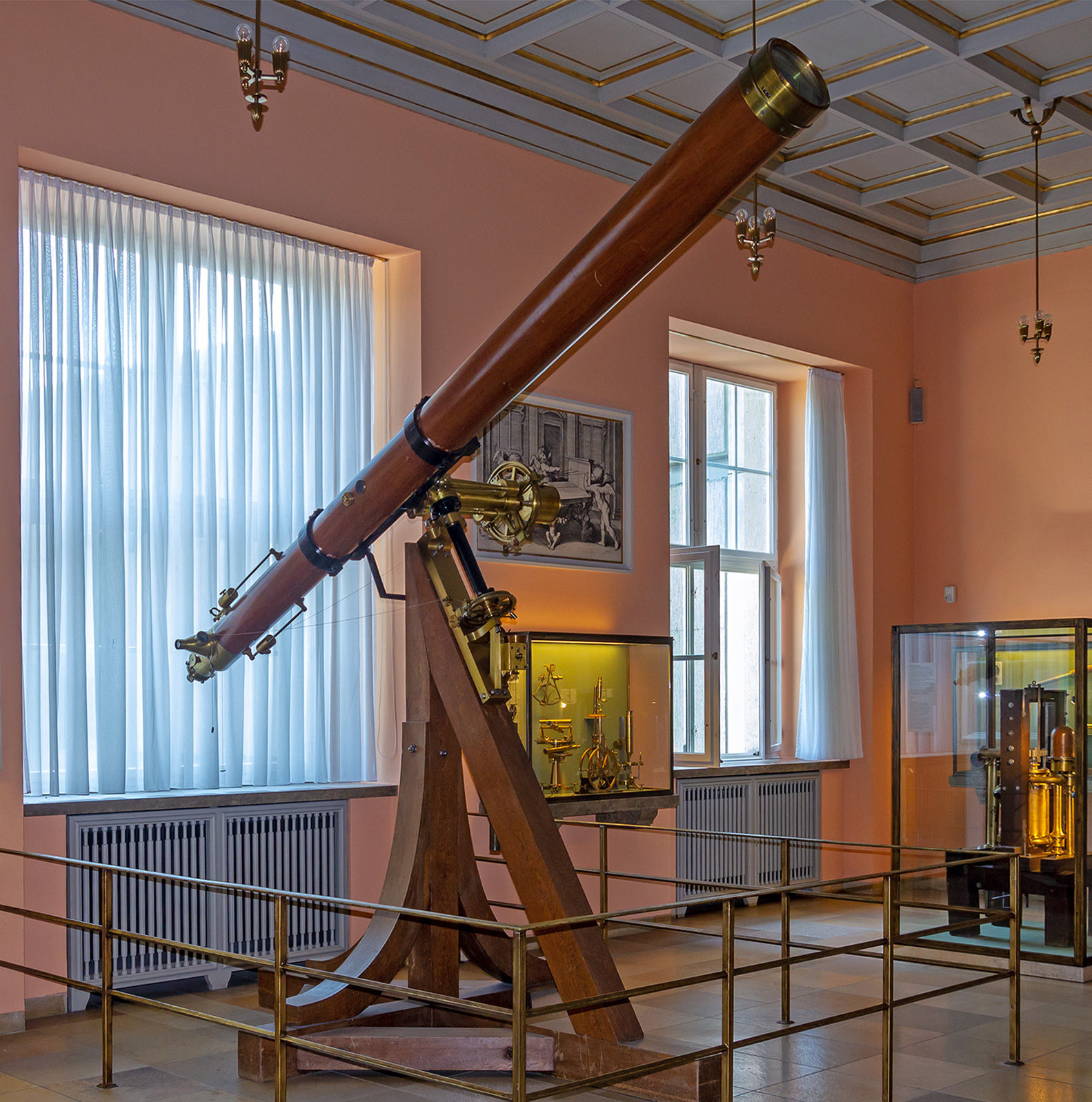
It was a planet, the first in history to be found via calculation prior to direct observation. As word spread, the Royal Society awarded Le Verrier the Copley medal for his historic achievement. The discovery of a new outermost planet was a triumph for Victorian-era science, and it thrust the astronomer’s assistant into astronomical celebrity. Le Verrier thought the new planet should be named “Le Verrier”—going so far as to retroactively refer to Uranus as “Herschel” after its discoverer—but the scientific community disregarded such vanity and settled on naming the new blue planet “Neptune” after the mythical Roman god of the sea. Newton was evidently vindicated.
Yet there was still the matter of the innermost planet, Mercury, that seemed to defy universal gravitation. Until this matter was settled, Newton’s formula would remain in question. With his newfound access to scientific resources, Le Verrier turned his sights toward the inner solar system to search for a second possible uncharted planet—this one hiding in broad daylight.
For centuries, there had been rumors and hypotheses regarding an unseen planet between the sun and Mercury. Even before Le Verrier discovered Mercury’s orbital irregularity, there were so many reports of dark spots moving across the face of the sun that scientists began to informally refer to a hypothetical intra-Mercurial planet as “Vulcan,” for the Roman god of volcanoes and forges. Once astronomers became aware of Mercury’s departure from Newton’s law, such a planet was naturally the most credible explanation. Alternatively, perhaps there was a hidden asteroid belt near the sun, similar to the one between Mars and Jupiter—a field of so-called “vulcanoids.” Another idea was that the sun might experience cyclical “solar protuberances” that cause variations in the sun’s gravity.
Le Verrier amassed and organized over 40 years’ worth of records on Mercury’s orbit to fully characterize the nature of its perturbation. Fortunately, Mercury orbits the sun in just 88 Earth days (compared to 84 Earth years for Uranus). After over a decade of number-crunching, Le Verrier determined that the irregularity was caused by perihelion precession—Mercury’s orbit was curving inward 56 arcseconds (about 0.016º) per Earth year more than it should. In other words, each time the planet made its closest approach to the sun, its orbital turn was slightly tighter than it should be. To an observer from above the solar system, a line tracing Mercury’s orbit would look more spirographic than universal gravitation could account for. In 1859, Le Verrier published a paper with his findings.
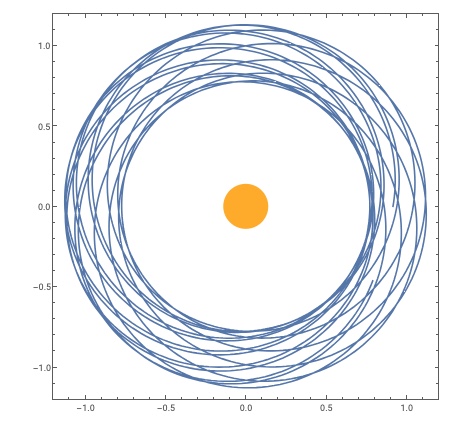
For obvious reasons, astronomers could not simply point their telescopes toward the sun and peer through the lenses looking for a new planet—specialized equipment and very lucky timing were required. Mercury, for example, circles the sun about 415 times in a given century, but owing to its eccentric orbit and high orbital inclination, Earth observers only witness about 13 transits of the sun per century. And viewing these transits requires deeply tinted filters or a setup that projects the sun’s image onto a screen. Mercury is sometimes visible during a total solar eclipse, when it happens to be to the left or right of the sun from our perspective. The same would be theoretically true of Vulcan, but it would be much dimmer, a faint speck, and there would be little time for searching (as Le Verrier learned first-hand when he led an expedition to Spain to observe a total eclipse in July 1860). All told, even with Le Verrier’s 1859 findings, and even if astronomers became convinced of the existence of an undiscovered intra-Mercurial planet, making a direct observation might require decades.
Five months later, the first credible sighting was reported. A French physician and amateur astronomer named Dr. Edmond Lescarbault was observing a presumptive sunspot with his backyard telescope when he realized that the oddly disc-like spot was moving across the face of the sun much faster than any sunspots he had seen before. Having observed a transit of Mercury years earlier, and knowing that Mercury would not be transiting at that time, he surmised that this was a previously undiscovered inner planet. Lescarbault used a small clock to time the transit and measured its precise size and position. He wrote down his findings and sent them to the relatively new director of the Paris Observatory, former assistant astronomer Le Verrier.
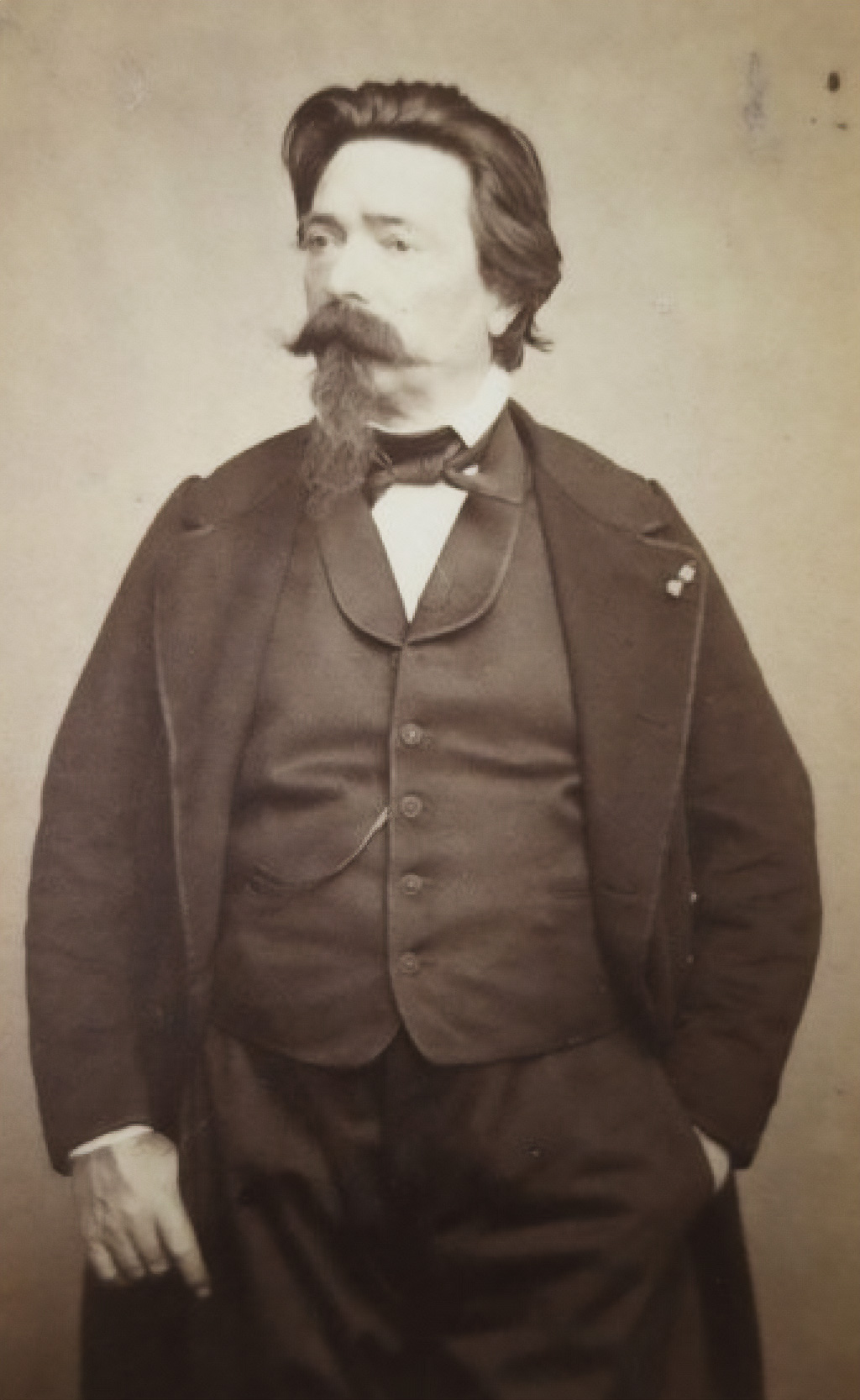
Several days later, an unexpected figure darkened Lescarbault’s doorway. It was Le Verrier. He had questions, and he seemed to be in a sour mood. Le Verrier interrogated the amateur astronomer at length and insisted on inspecting Lescarbault’s telescope. To Le Verrier’s surprise, the backyard telescope was a quite capable device—a four-foot-long lens-based refractor (as opposed to a mirror-based reflector), with an objective lens about four inches in diameter. Le Verrier noted that Lescarbault had respectable equipment, a modest demeanor, painstaking measurements, and previous experience observing a planetary transit of the sun. Gradually, the once-skeptical director of the Paris Observatory unclenched his cynicism and became persuaded that the observation was legitimate. Le Verrier later wrote, “Lescarbault’s explanations, the simplicity with which he offered them to us gave us total conviction that the detailed observation he had completed must be admitted to science.”
On 02 January 1860, at a meeting of the French Academy of Sciences in Paris, Le Verrier announced the discovery of a new planet for the second time in his career. Based on Dr. Lescarbault’s careful observations, he had calculated that this planet orbited the sun at a distance of just 13 million miles. At that distance, an observer on “Vulcan” would see a sun 50 times larger and brighter than it appears on Earth, and a year would last just under 20 Earth days. If Le Verrier’s orbital figures were anywhere near accurate, the timing was fortuitous—the next transit of the sun was anticipated to occur in March 1860, just three months in the future. If not then, there were other transit windows predicted approximately one Earth year apart.
For his historic contribution to science, Dr. Lescarbault was presented with the French Legion of Honor, the country’s highest order of merit. The scientific community celebrated once again, though this time with reservations. Vulcan was not a sure thing; it had not yet been verified by direct observations, but Le Verrier’s reputation certainly gave the claim some legitimacy. After all, no other human had ever prognosticated a planet via mathematics. While awaiting the first opportunity to directly view the new planet’s silhouette against the sun, observatories around the world began an extensive review of photographic plates from prior solar observations, hoping to find dim, overlooked specks in eclipse photos, or suspiciously round sunspots.
Some weeks after the announcement of Vulcan’s existence, Le Verrier received a parcel from the Bern Observatory in Switzerland. It was from Prof. Dr. Rudolf Wolf, a sun-studying scientist of some renown. He was famous for designing a system to quantify sunspots, a system scientists still use today known as the Wolf Number. He was also the first to discover that sunspots proliferate and abate in regular cycles of 11.1 Earth years. After the news of Dr. Lescarbault’s observation, Dr. Wolf scrutinized his collection of solar photographs, and sent Le Verrier 21 images that showed possible planetary sightings. There was nothing definitive; they were mostly ambiguous spots and smudges, but the photographs added to the orgy of circumstantial evidence.
During the prescribed transit window in March 1860, scores of tinted telescopes around the world swiveled to point directly at the sun. With hundreds of eyes over dozens of days, no planetary transits were reported. During the next predicted window, about a year later, results were similarly disappointing. In the third year, however, in the early hours of March 20th, hobbyist astronomer “Mr. Lummis, of Manchester” was observing with his telescope when he was startled by a “perfectly round spot moving across the sun.” He summoned a friend to validate the sighting, and his friend concurred. It looked like a planet. Based on Mr. Lummis’s subsequent report and its details, astronomers further revised Vulcan’s hypothetical orbital parameters to better predict future transit windows.
That same year, on the other side of the globe in the American Northwest, another observer described his potential sighting of Vulcan:
“The sun had reached an altitude of about 80° above the horizon, when a small boy asked me what was the matter with the sun. On looking at it I saw a planet […] a perfectly rounded, well defined dark spot […] I watched its progress till its completion without a telescope, merely glancing with partially closed eyes, at very short intervals.”
In 1876, astronomer Heinrich Weber, observing from northeast China, reported a dark disk moving across the face of the sun that could not be explained as any known planet. This was the strongest evidence yet for Vulcan. Now that a true professional astronomer had laid eyes upon the elusive object, the public and the popular press were eager to declare Vulcan officially in existence. Many scientists were more circumspect; the evidence was still too weak. No other professional astronomers had reported similar observations at that time. Apart from its apparent influence on Mercury, the only evidence for another planet was a long history of spotty, unreplicated glimpses and blurry solar photos. It was the sea serpent of the solar system. Nevertheless, some manufacturers of solar system charts began including the intra-Mercurial body as a presumptive planet, and astrologers began to include Vulcan’s movements in their horoscopes.
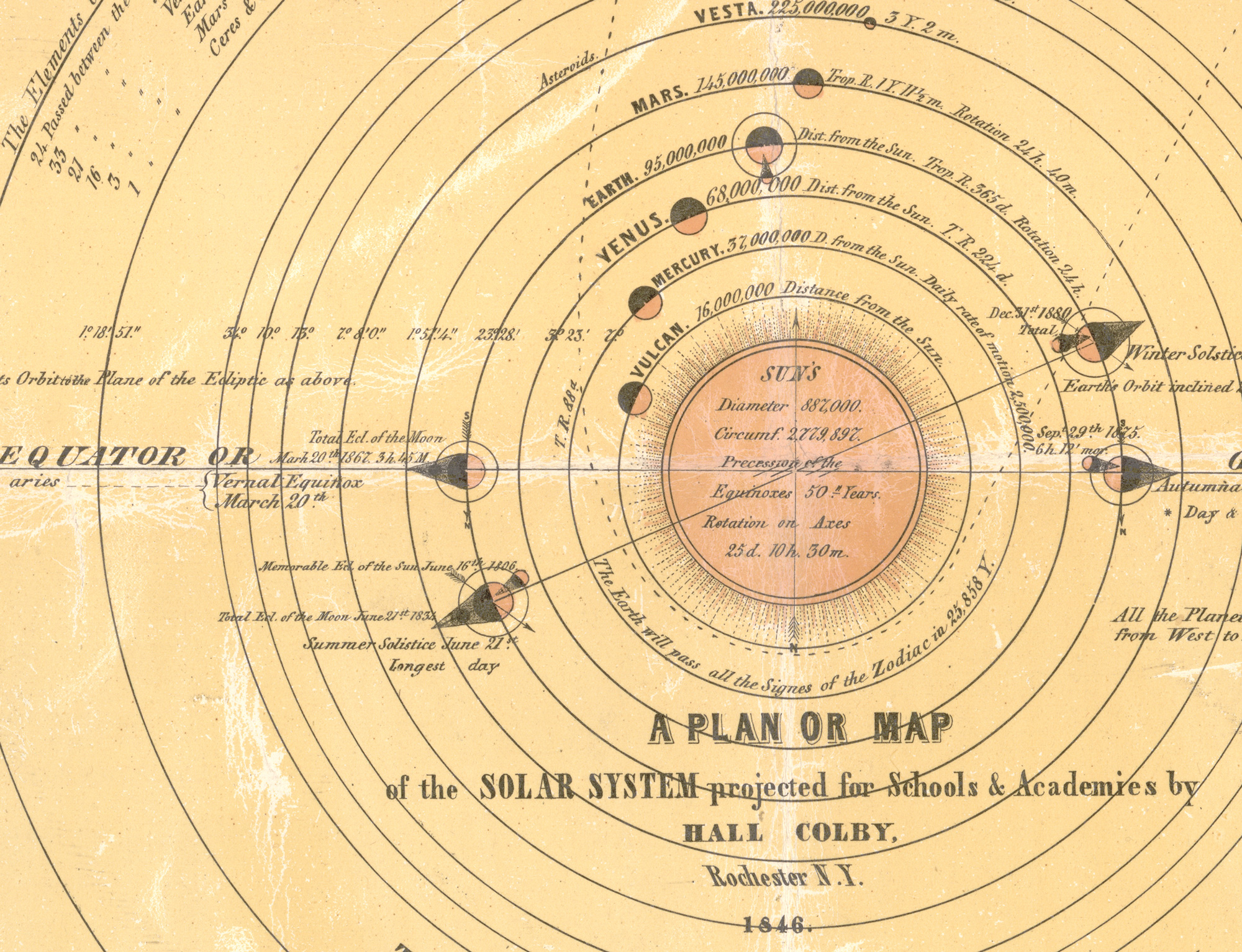
Skepticism in scientific circles notwithstanding, the popular press largely embraced the idea of Vulcan. The Manufacturer and Builder, a monthly “practical journal of industrial progress” wrote:
“Our text books on astronomy will have to be revised again, as there is no longer any doubt about the existence of a planet between Mercury and the sun.”
As The New York Times put it:
Vulcan exists, and its existence can no longer be denied or ignored. The Earth must henceforth be ranked as the fourth planet from the sun, and the children in the public schools who have been taught to recite their planets after the old-fashioned order, must be required to commit Vulcan to memory and insert it in its proper place.
In the Scottish periodical The North British Review, one reporter remained skeptical:
Since the first notice of the discovery in the beginning of January, 1860, the sun has been anxiously observed by astronomers […] and yet no planet has been found. […] Should this be the case, we must refer the round spot on the sun to some of those illusions of the eye or of the brain which have sometimes disturbed the tranquility of science.
In 1877, a year after Heinrich Weber’s observation, Urbain Le Verrier’s health began to sharply decline. He was gripped with fatigue. This, it turned out, was due to cancer of the liver. In September of that year, the accomplished astronomer and mathematician died, aged 66, one of the few astronomers in history to have discovered a planet—let alone two.
A year after Le Verrier’s passing, Vulcan’s prospects were further cemented when two more professional astronomers reported sighting the evasive celestial object from independent sites during a total solar eclipse. Both observers described a reddish disk near the sun that could not be accounted for by known astronomical bodies. Professor James Craig Watson observing from Wyoming, USA, later said in an interview:
I was satisfied that there was a planet within the orbit of Mercury, just as I am satisfied that there is outside the orbit of Neptune. […] It was on the fifth sweep that I saw the object. It seemed about as large as a two-shilling piece, did not have so many rays as a star, and was without the elongation of a comet. As soon as I saw it my attention was attracted. I next felt certain I had found what I was looking for.
Scientific American reported:
After twenty years of dispute, complicated by many doubtful and conflicting observations, the intra-Mercurial planet discovered by the Parisian physician, Lescarbault, will probably now have to be admitted to full standing among the planets.
And in The Times in London:
There seems little reason to doubt that a new planet nearer to the sun than Mercury has been discovered, and that this planet really is Lescarbault’s Vulcan.
In 1880, two professors working on behalf of the US government reported the observation of Vulcan during a total solar eclipse viewed from California. The matter seemed settled. Le Verrier must have done it again. To posthumously honor his contributions to astronomical science, the architects of the Eiffel Tower inscribed his name among 72 others when the landmark was erected in 1889. Although astronomers were still unable to reliably observe planet Vulcan, and a considerable quantity of scientists still felt it was a myth, a substantial portion of people were convinced it was out there. Something was certainly causing Mercury to wobble, and Vulcan remained the best explanation.
In 1915, 38 years after Le Verrier’s death, a theoretical physicist published a short paper titled “Die Feldgleichungen der Gravitation,” or “The Field Equations of Gravitation.” The paper never once mentioned planet Vulcan, yet proved instrumental in Vulcan’s scientific fate, as well as our very understanding of the laws of the universe.
The paper was the work of Professor Albert Einstein. While not yet a household name, Einstein was already known among physicists for his theory of special relativity published ten years earlier, which described the relationship between space and time and the effects of relativistic velocities. This new paper laid out the theory of general relativity, which proposed that gravity is geometric curves in spacetime caused by mass.
Such a theory seemed difficult to test, but Einstein had a convincing calculation included in his paper. Taking into account the mass of the sun and Mercury’s distance from it, he showed how his equations perfectly predicted the planet’s perihelion precession. Another test Einstein proposed was to observe a total solar eclipse and compare the positions of stars around the sun with their known positions. If general relativity was correct, the stars’ apparent positions would shift closer to the sun’s center due to the light being bent, an effect known as gravitational lensing. In May 1919, British astrophysicist Arthur Eddington confirmed this prediction during an eclipse visible from the West African island of Principe. When the popular press learned that Newton’s long-held law of universal gravitation was finally superseded, Einstein became world famous.

With general relativity, there was no longer a need for an invisible planet to explain Mercury’s odd wobble—our local star was just bending the universe a little. Vulcan disappeared in a puff of theoretical physics. All of the sightings from over the centuries were written off as misidentified sunspots, artifacts of harsh viewing conditions, and wishful thinking. All the same, many astrologers continue to rely on Vulcan for their horoscopes. The International Astronomical Union, a body responsible for naming celestial objects, continues to reserve the name “Vulcan,” just in case we do one day detect an invisible planet lurking in the heart of our solar system.
Epilogue
In 1971, 56 years after Einstein published his theory of general relativity, physicist Joseph Hafele and astronomer Richard Keating visited Pan Am Airlines to buy tickets for an extremely long-haul series of flights: a trip around the entire planet. The pair of scientists purchased tickets for four seats—one seat for each of them, and two for “Mr. Clock.” Mr. Clock was a pair of cesium-beam atomic clocks on loan from the US Office of Naval Research—timekeeping devices with an error rate of +/-1 second every 1.4 million years. The clocks were both precisely synchronized with a master atomic clock at the United States Naval Observatory. The scientists hypothesized that a trip around the world at 30,000 feet, with its varying velocity and marginally reduced gravity, would cause measurable time dilation on these extremely precise instruments.
The first Pan Am 747 departed Washington, D.C., heading eastward. Hafele, Keating, and Clock circled the globe over three long days, with the scientists sleeping in shifts to monitor the delicate equipment. After finally landing back in D.C., following a two-week rest, they repeated the exercise, but flying west, this time with a different set of clocks. Upon landing, the portable clocks were compared with the master atomic clock at the Naval Observatory. The three sets disagreed with one another consistent with the predictions of relativity—they had all experienced the flow of time at slightly different rates. With this elegant experiment, Hafele and Keating provided fairly robust evidence that Einstein’s theories are correct. The total cost of the experiment was just $8,000—$7,600 for airline tickets, and $400 for incidentals.
The best evidence yet for relativity comes from the modern Global Positioning System, better known as GPS. Each GPS satellite in orbit has an onboard atomic clock that must be synchronized with others on the ground. But the orbiting satellites move at almost 4 kilometers per second relative to Earth’s surface, and gravity is weaker 20,000 miles up. To keep the 31 satellites’ clocks in sync with earthbound counterparts, engineers had to build atomic clocks that run 38 microseconds faster per day to account for relativity. While 38 microseconds doesn’t sound like much, without this adjustment, the accuracy of GPS coordinates would diminish by about 7 meters per minute and almost immediately become useless. For the same reasons, if humans ever establish a long-term moon colony, lunar clocks will need to adjust for relativity to keep in sync with Earth because clocks tick slightly faster on the moon. And if we ever want to build a GPS-style system for the moon dwellers, that will require yet another tier of relativistic tuning.
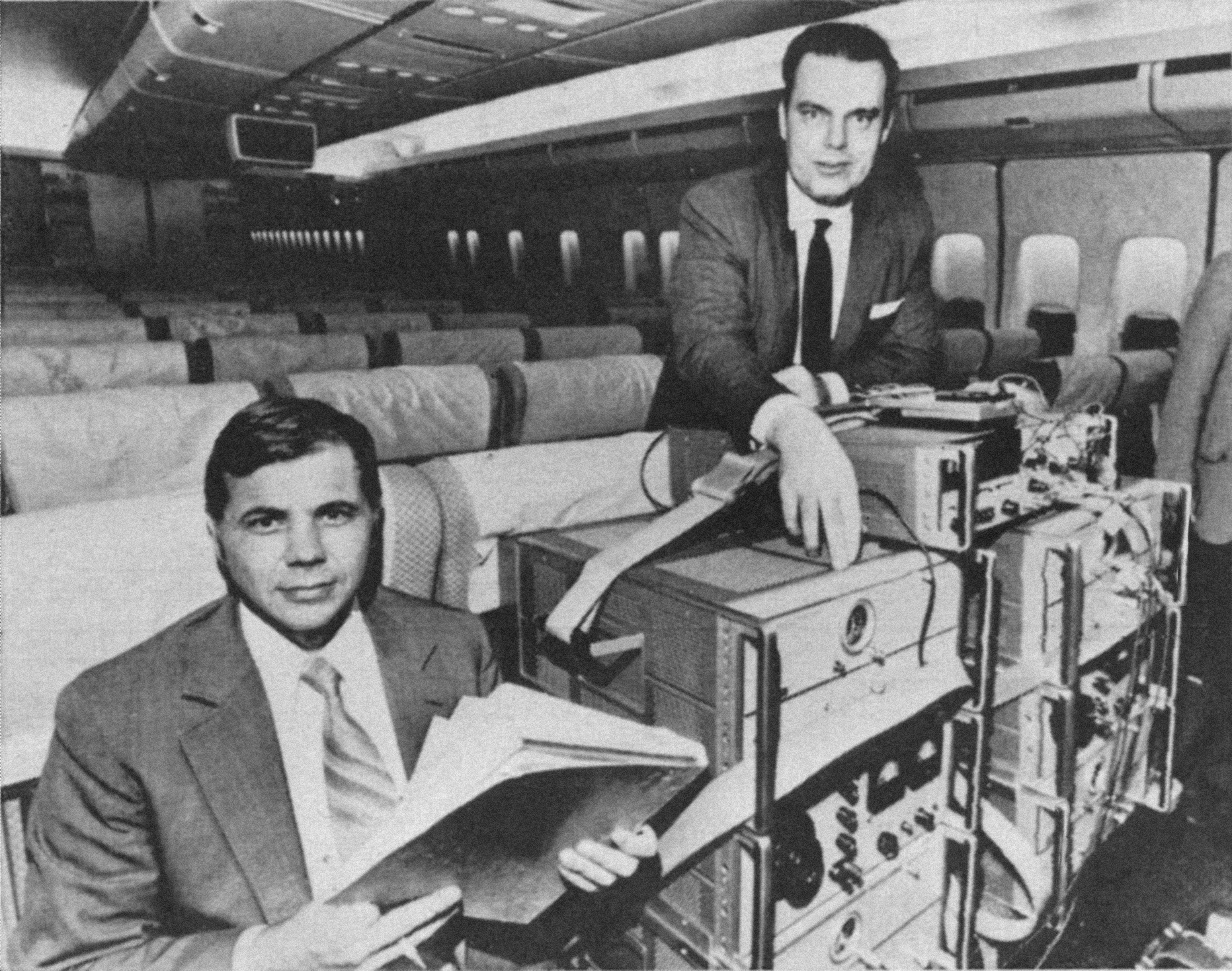
As remarkably successful as Einstein’s theory of gravity has been, and as well as it has held up to experimentation, we also know that it is incomplete—it breaks down at extreme scales. For reasons that are not yet clear, it has no predictive ability in the quantum realm. It also makes incorrect predictions at the cosmic scale; according to general relativity, most galaxies in the observable universe are spinning so fast that they should fly apart based on the mass we can see and the binding force of gravity. This inconsistency is a problem known as dark matter, and it has given rise to various hypotheses to explain it. Most proposed models suggest that if Einstein’s relativity is exactly correct, much of the gravity in the universe must come from unseen, untouchable, and gravity-rich particles. Astronomers also observe that galaxies in our universe are moving away from one another in a manner that defies Einsteinian gravity, which led to the hypothesis that a dark energy is causing the universe to expand.
It is tempting to draw parallels between dark matter, dark energy, and planet Vulcan—all of them elusive, imperceptible influences plugging holes in accepted theories. As clunky as these hypotheses feel, perhaps 84% of the universe really is a soup of detection-defying, untouchable gravity blobs and mysterious stretching forces. After all, the universe isn’t obligated to agree with human intuition. Or, perhaps one day a new theory will arise that describes observed reality more reliably, superseding general relativity just as Einstein did to Newton. As Einstein himself said, “No amount of experimentation can ever prove me right; a single experiment can prove me wrong.” Perhaps one day dark matter and energy will disappear in a new puff of theoretical physics. Spacetime will tell.
© 2023 All Rights Reserved. Do not distribute or repurpose this work without written permission from the copyright holder(s).
Printed from https://www.damninteresting.com/journey-to-the-invisible-planet/
Since you enjoyed our work enough to print it out, and read it clear to the end, would you consider donating a few dollars at https://www.damninteresting.com/donate ?
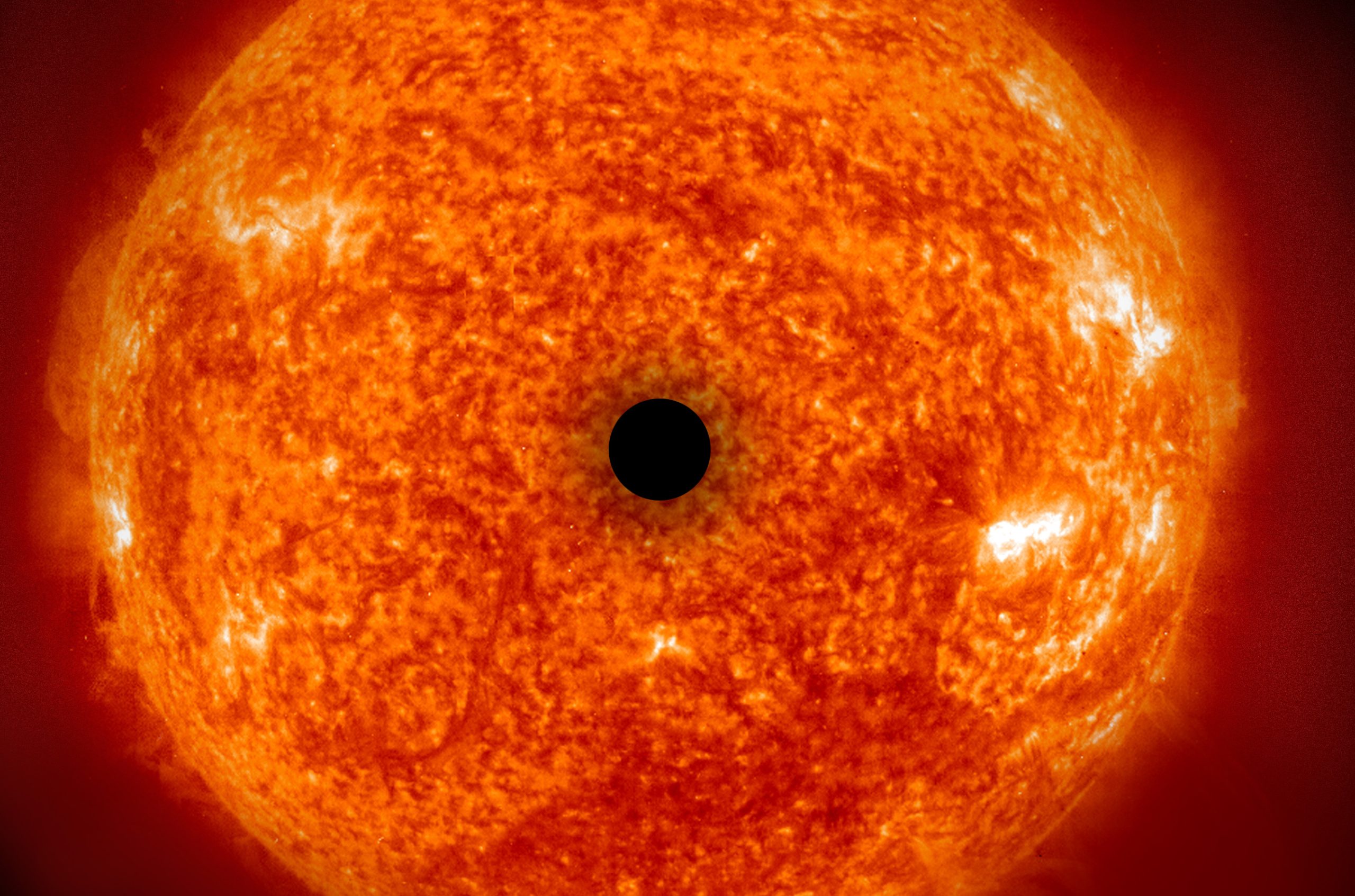
First! Excellent article so stoked to see one from @Alanbellows again :)
Second! Always a good day when there is a new piece. Thanks again.
How about a Lunar Positioning System, or LPS, for the moon?
I really enjoyed the article.
Asimov and Silverberg explored the concept of a “hidden” planet in their 1990 science fiction novel entitled “Nightfall.” I can’t recall if the novel touched upon the General Theory of Relativity, though.
So what were the “disks” that the various observers believed to be a planet?